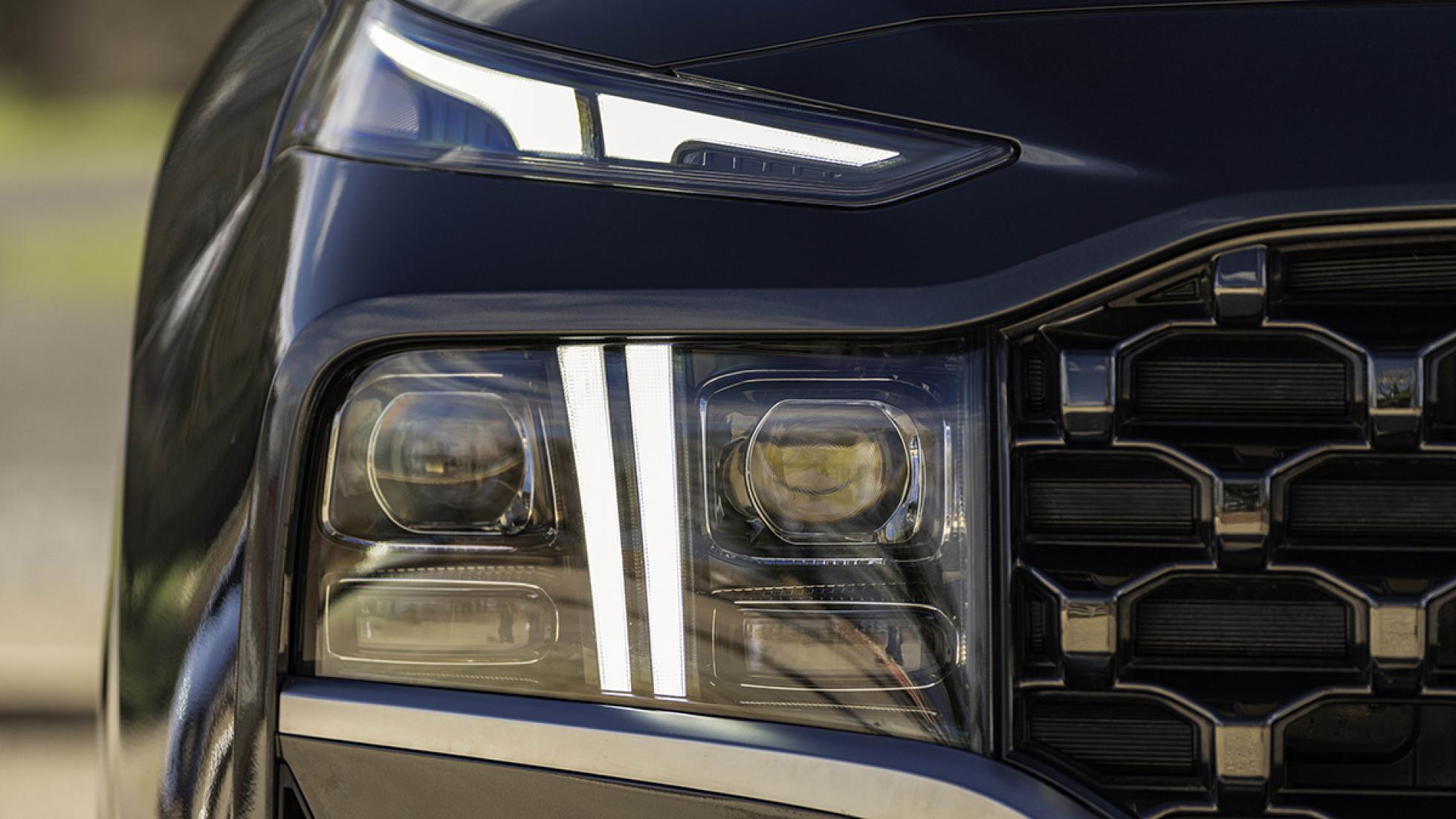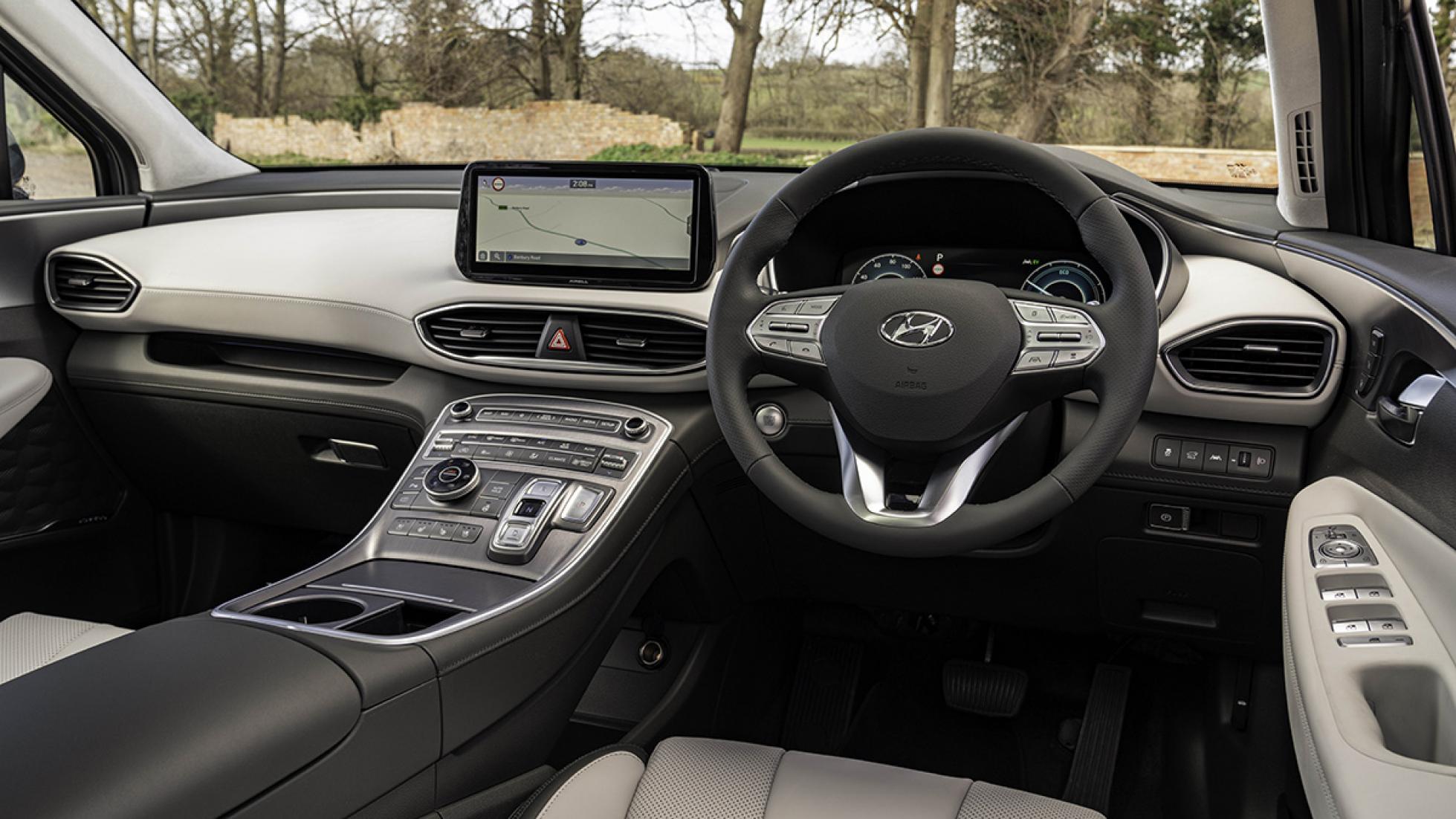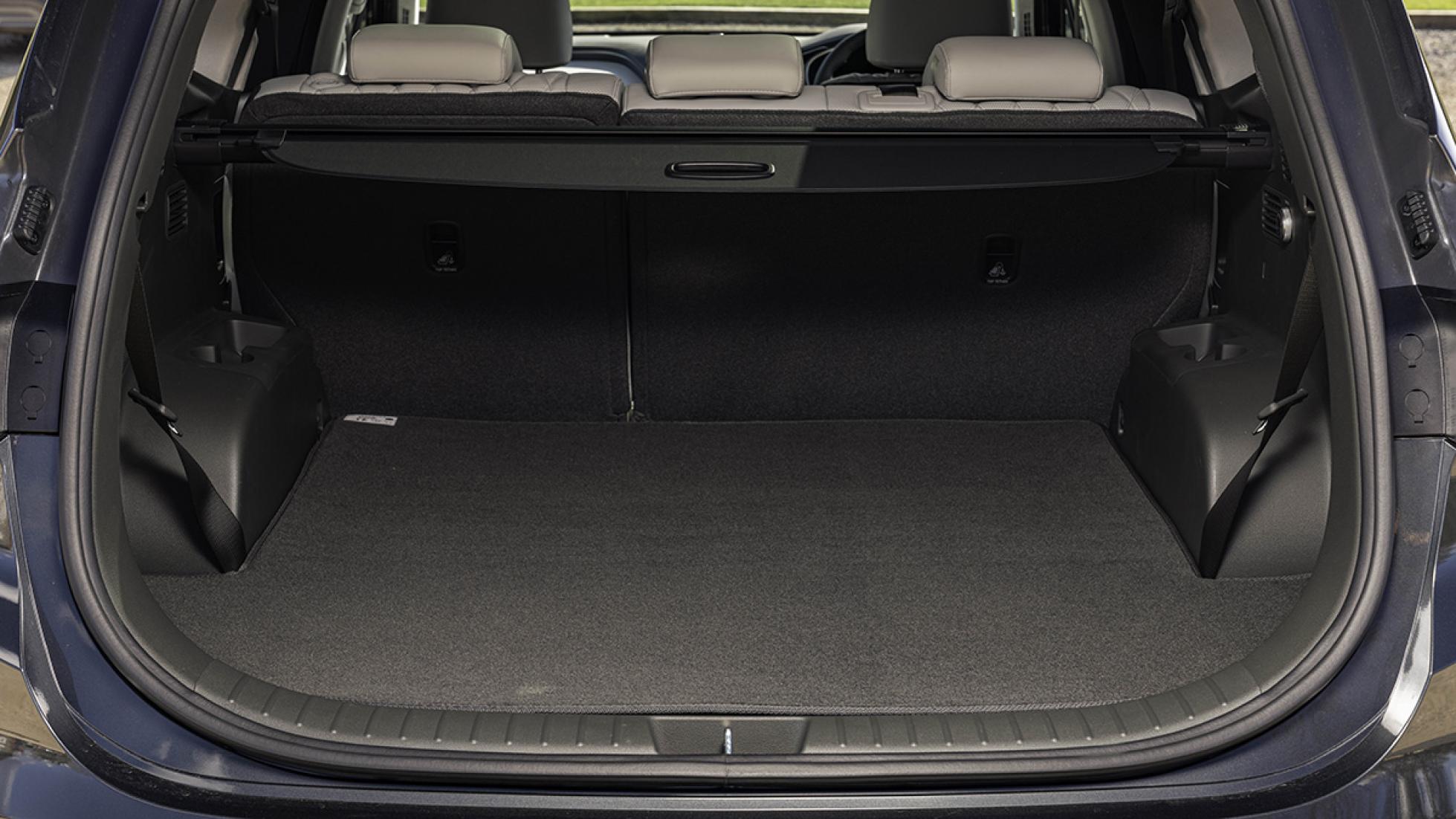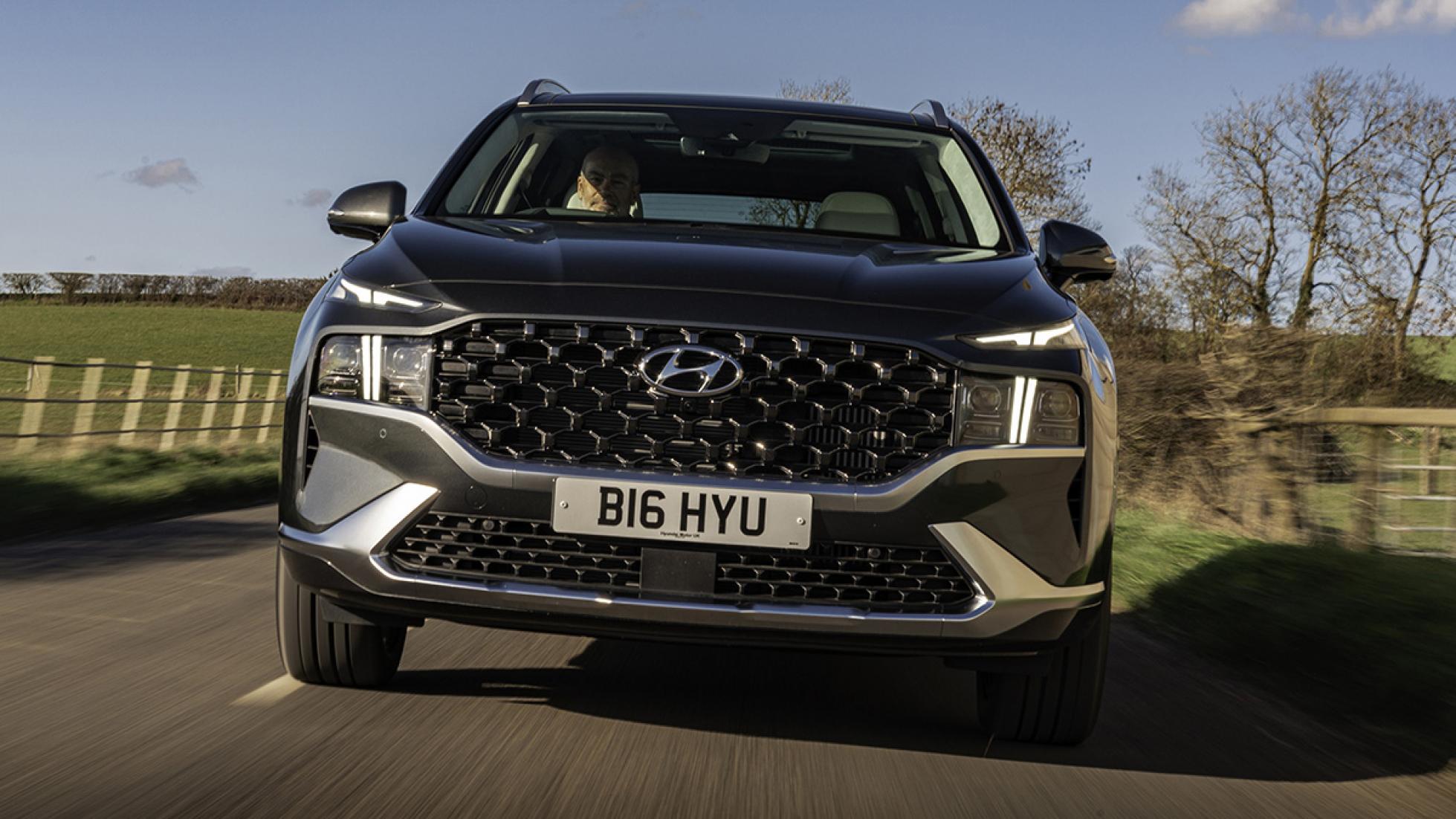Top Gear's Hyundai Santa Fe review
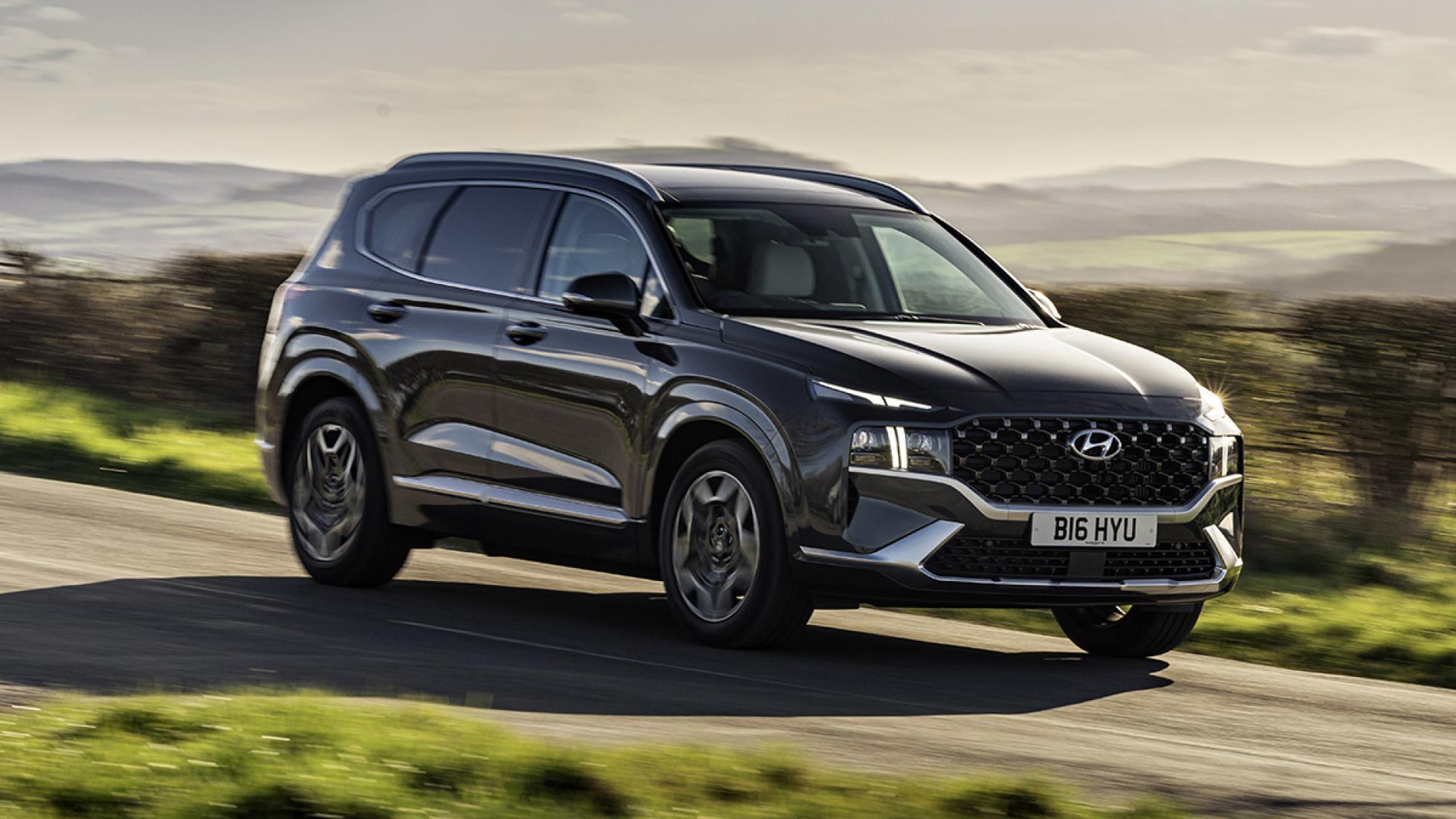
OVERVIEW - What is it?
The Santa Fe is what passes for a Hyundai flagship in Europe. In other parts of the world it’s much more of a mid-range car, but such are the varying tastes and practicalities around the globe. First released in 2001, the car has now reached its fourth generation, with a facelift in 2020 introducing some new electrified options and improved styling.
The Santa Fe’s appeal exists on two levels – it has seven seats for hard-pressed families, and it has traditionally been cheaper than its rivals. Those include the Skoda Kodiaq and Land Rover Discovery Sport, both of which it now sits alongside in terms of list price, even if you can ultimately spend a lot more money speccing up your Discovery Sport. You can also view the Santa Fe as a cheaper alternative to the likes of the Volvo XC90, Audi Q7 and Land Rover Discovery, all of which are bigger and more expensive but come with a more premium image. Toyota now has large hybrid SUV skin in the game in the form of the Highlander, but that car is priced up alongside the premium crowd.
This isn’t to say that Hyundai is a bargain bin brand, of course – the Korean firm has put a lot of effort into upgrading its image through bold styling, improved quality and motorsport cachet with its world rally championship efforts. You won’t want to take the Santa Fe on the Monte Carlo Rally, but to our tired eyes the styling works well. The front end is distinctive without being obnoxious, and fingers crossed it ages well. The Santa Fe has avoided the temptation to ape more car-like styling cues and wears its upright, 4x4-style stance well.
One thing you’ll notice when you get behind the wheel of the Santa Fe – even if you haven’t driven previous versions of the car – is the effort that Hyundai has put into its general refinement. Road and wind noise have been well damped and there are no creaks or rattles on the move from the suspension. Most bumps and potholes are well smothered by the Santa Fe’s suspension, with a slight audible cue to let you know what’s happening.
The Hyundai is definitely worthy of making your shortlist when it comes to seven-seat cars, albeit with the standard caveat that the rearmost seats are really best suited to youngsters. If you want to carry six adults along with you, you’ll have to look somewhere bigger. The Santa Fe might suffer in comparison to its rivals if you’re looking for a wider range of engines. This car comes with a 2.2-litre diesel, or a 1.6-litre petrol paired up with a ‘self-charging’ hybrid or a plug-in hybrid set-up. Those three options should provide enough to cover most needs.
This is the first generation of Santa Fe to be offered with a two-wheel drive option, a pragmatic admission from Hyundai that your usual SUV buyers aren’t necessarily interested in putting the car’s visual promises of off-road glory into practice. What you lose in go-anywhere ability you claw back in improved fuel consumption.
DRIVING - What is it like on the road?
Where some cars exist to make your life better, the Hyundai’s remit is more about making your life easier. It is by no means fun to drive, but that’s not really the point of a car like this. It is, however, quite soothing, which you’ll probably appreciate if you’re in the market for a seven-seater.
The effort that Hyundai has put into refinement pays off with a relaxed drive, with a smooth ride that smothers out urban lumps and bumps and makes for a pleasant tourer along the motorway. Hustling along a country road it’s not quite as impressive, with a certain amount of lateral movement on the shoddy surfaces and pothole thunks as the suspension reaches the edge of its composure. Easy to forget this is a 2.0-tonne car. Dial it back a notch, though, and the car feels a bit more comfortable. What the handling lacks in outright feel it makes up for in predictability, going where you want, although there is a little bagginess around the straight-ahead.
The Santa Fe is newly available with 2WD as an option on the diesel and hybrid versions of the car, which is a pragmatic move, while the PHEV is only available as a four-wheel drive. One perk of the 4x4 set-up is the opportunity to select driving modes – Eco, Sport or Smart, which is a peppy mix of the previous two. Flicking the dial changes throttle response and steering, as well as cycling through a nifty set of instrument panel graphics. Eco mode can feel a little dim-witted, while Sport weights up the steering and hangs on to gears for dear life. Still, the smart choice is to leave it in, er… you get it. You can also select different modes for different terrains, such as mud or snow, for maximum traction.
There are three different powertrain options available on the Santa Fe – a 2.2-litre diesel and a 1.6-litre petrol in hybrid or PHEV guise. The diesel comes with either a six-speed manual (Premium spec only) or an eight-speed automatic gearbox, and its relaxed nature is well suited to the car. You might lament the lack of a smaller diesel option that rivals offer, but such is life.
The hybrid version of the Santa Fe is more about making a petrol engine option viable in a diesel-phobic era than outright eco Top Trumps – that’s what the plug-in version is for. The 59bhp electric motor prefers to act more in concert with the engine rather than trying to replace it – you can thank the weedy 1.5kWh battery for that. You don’t enjoy enough time in EV mode to show off unless you really tickle the car along, but the electric motor will cut in at impressive moments, such as on a motorway cruise. It all adds up to official fuel consumption figures of 6.69l/100km in the 2WD version and 7.39l/100km in the 4WD car that aren’t impossible to get close to.
The PHEV powertrain is shared with the Kia Sorento, a seven-seat sibling on the same platform that should also go on your family car shortlist. The PHEV comes with a more powerful 90bhp e-motor that plays more of a part in getting the car about. That car gets a 14kWh battery that’s good for around 58 kilometres of range and official fuel consumption of 1.63l/100km. If you can keep the battery topped up (it’ll charge on a Type 2 plug in around four hours) then it’s the obvious choice.
The six-speed auto box in the hybrid and PHEV cars is bang average, doing a solid job without being particularly noteworthy. The car occasionally gets flummoxed at junctions, with a hesitancy before committing to the power you’ve asked of it. Likewise, you’re likely to try the steering wheel paddles once before deciding to let the car do the work – the gearbox is slow to react if you’re trying to short-shift, for example.
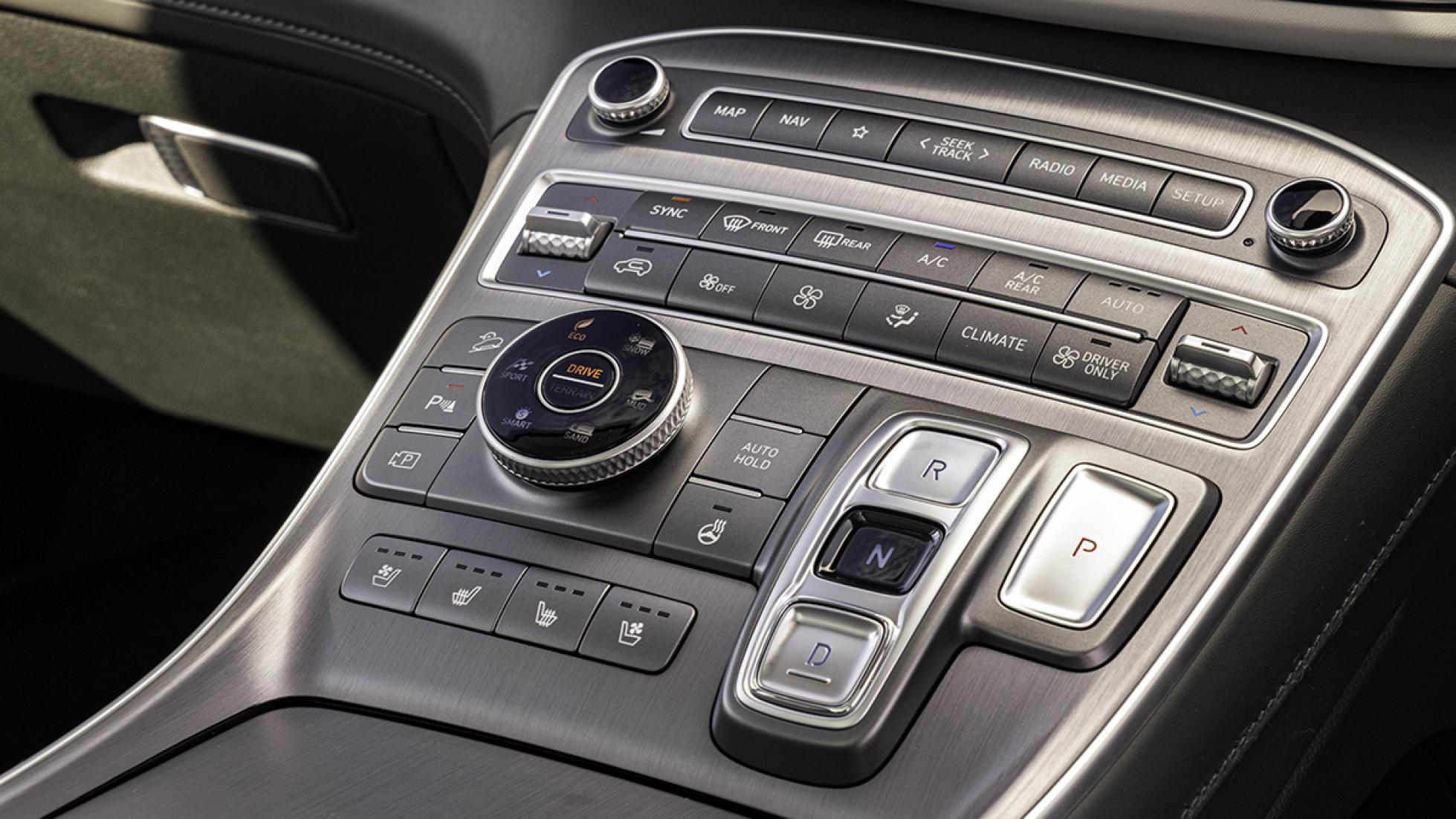
ON THE INSIDE - Layout, finish and space
Hyundai has done a good job on the interior of the Santa Fe – it feels upmarket without being the sort of cabin you’d be too scared to let the kids loose in, and there is storage galore. The door bins are on the small side, but the central storage is fairly cavernous and there’s a useful little shelf above the glovebox for pens and small change.
It’s worth noting that there are different set-ups for the diesel and electrified versions of the car. The diesel car gets an entirely conventional dashboard, with a low gearstick meeting aircon controls and rising up to a 7in/8in touchscreen flanked by buttons, whereas the hybrid and PHEV versions of the car have a higher ‘floating’ centre console that continues forward from the armrest and curves gently up to a 10.25-inch touchscreen, all the buttons concentrated in easy reach. The latter is more ergonomically pleasing and frees up yet more storage below. The diesel car is offered in Premium and Premium SE versions that broadly correspond to the spec levels of the electrified cars’ Premium and Ultimate specifications, although the latter cars do enjoy some fancier tech.
The Santa Fe makes fairly easy work of its varying configurations – there are buttons in the boot to drop the middle of seats if you want to create a cavernous 1,649-litre load space (it’s a useful 571 litres normally), there are straps on the back of the third-row seats that lift them easily up into position. Sadly there’s nowhere to chuck the boot cover, which will probably end up languishing under the stairs.
If you’re trying to get kids into the third row there’s an easy access button that flings the middle seat forwards in a catapult motion, but that’s only on the passenger side of the car, the logic being that you’ll pull up on the left-hand side of the road to safely disgorge your children. Try to dump them in a car park and you’ll flummox the whole system, but thankfully the middle row of chairs can be moved backwards and forwards on rails. It’s not as smooth on the driver’s side of the car but it can be done. One point to note on the Santa Fe is that while you get three Isofix points in the car, one of these is the front passenger seat, you only get two in the middle row.
Flexible seating is de rigueur on cars like this these days, but it’s worth mentioning the middle row on the Santa Fe can slide backwards and forwards on a 60/40 split, as well as offering backrests that recline for a touch more leisure. A particularly nifty feature is the passenger talk function, where the driver can talk to the kids from their seat and it’ll play through the speakers (you can save your voice instead of shouting). In all electrified specs, the second row gets heated seats and a few USB plugs, while the folks in the boot get their own little aircon dial for some fresh air. It can get pretty ripe at the business end of a people carrier, so it’s nice that they’ve been thought of at the back.
The driver and passenger get heated, electrically adjustable seats in both Premium and Ultimate specifications, while the latter adds ventilation to the chairs. Those cars also get an upgraded sound system, wireless phone charging
(as well as Apple/Android connectivity via USB) and an electric tailgate as standard. The Ultimate car also gets a panoramic electric sunroof, which lightens up the cabin nicely. We drove the latter spec with the optional Luxury Pack, which adds white Nappa leather across the cabin, a suede roof lining and aluminium inserts around the cabin. At £2,000 (RM11k) it’s probably not worth it, but it does make for a lovely ambience if you’re really desperate to outdo the neighbours.
The Ultimate-spec car also gets a 12.3-inch digital instrument panel display that renders itself superficially pointless by faithfully recreating a set of analogue dials. Turn on the indicators, though, and the digi-display immediately redeems itself by showing you a camera view looking back along whichever way you’ve just indicated you’re about to turn. It doesn’t replace the good old lifesaver look over your shoulder, but it’s a nifty safety feature that should help alert you to the presence of cheeky cyclists and moped delivery drivers creeping up your flank.
The surprise-and-delight feature on the Ultimate-spec car is the so-called ‘Remote Smart Parking Assist’, which allows you to fire up the car and move it backwards and forwards in and out of spaces. Useful if you have a tight garage to park in, but more likely to be used to show off to friends and relatives. All Santa Fes come with front and rear parking sensors, as well as rear cameras with positioning guidance – useful for parking, because it’s not always easy to see out of the car. The higher-spec models add a surround view monitor that’s particularly good, stitching together camera views to give a top-down view that’s actually useful.
OWNING - Running costs and reliability
The diesel version of the Santa Fe looks like a solid bet on paper, but these days you’ve got to weigh that against punitive tax costs and the increasing prevalence of so-called low-emission zones. The diesel costs £38,060–£43,125 (RM218k-RM247k), upgrading to the hybrid model adds around £2,000 (RM11k) and then the PHEV model will add around £3,000 (RM17k) on top of the hybrid 4WD models, taking the top of the range to £48,955 (RM280k). Hyundai is offering some solid PCP offers on the hybrid model, which you can get for around £490 (RM2.8k) a month, while both the diesel and PHEV come out around £570-590 (RM3.3k-RM3.4k) per month.
The Sorento is the first obvious place to look at a Santa Fe alternative, although with a price range of £37,915–£52,445 (RM217k-RM300k) that car is a lot spicier at the top end, making the Santa Fe the more compelling option as a PHEV.
The Land Rover Discovery Sport is priced from £32,430–£51,895 (RM186k-RM297k) (it can get very posh in there), with a variety of diesel and petrol options available. There is a PHEV, but that one loses the extra two seats to the battery pack. It’s not a cheap car to lease, mind, even the entry 2.0 D165 Urban Edition model is around £620 (RM3.6k) per month.
The Peugeot 5008 is another seven-seater without an eco option, unless you count a downsized 1.2-litre petrol, but at £30,010–£41,340 (RM172k-RM237k) (or £388–£525 (RM2.2k-RM3k) per month) it’s certainly competitive on price. It’s also easy to forget that the Ford S-Max is still going. Old as it is, it’s still the driver’s choice in this segment (all relative, of course), ranging from £33,335–£43,010 (RM191k-RM246k) and even offers a hybrid. The entry S-Max can be had for £420 (RM2.4k) per month.
The Santa Fe’s price list might look perky alongside rivals, but don’t forget that Hyundai has thrown the kitchen sink at the equipment list. Your additional options consist of £700 (RM4k) or so for fancy paint, or £2,000 (RM11k) for swanky leather. There’s a raft of safety equipment fitted and tech gizmos galore inside. Should anything break there’s a five-year unlimited mileage warranty and fixed term servicing packages available.
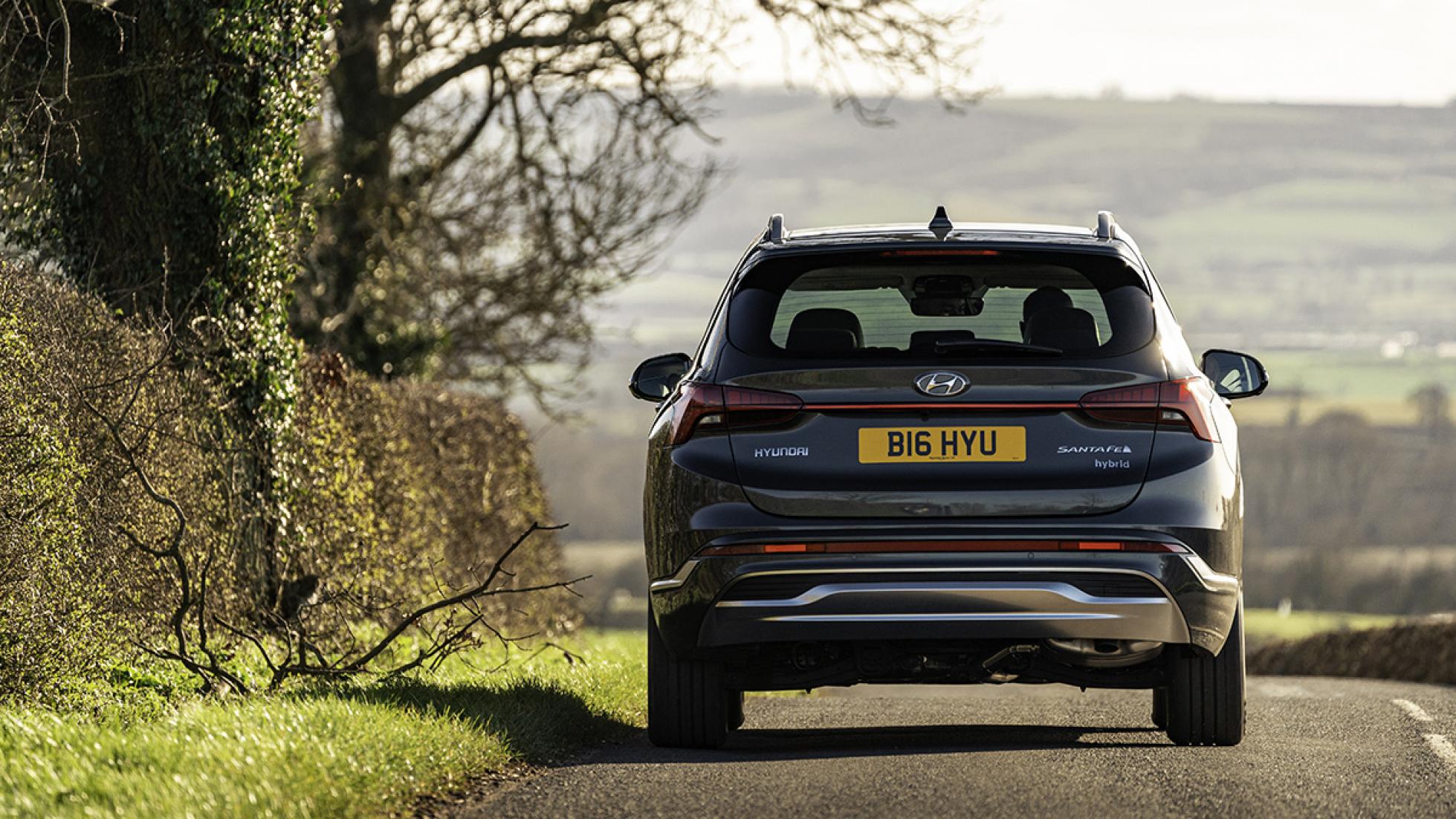
VERDICT - Final thoughts and pick of the range
"Santa Fe’s hybrid options should be a future-proof purchase"
It’s a difficult transition to manage, trying to go from budget to mainstream carmaker, but Hyundai has nailed it so far. For some the Hyundai badge still won’t have the cachet of rivals, but if you can look past that the Santa Fe has a lot to offer.
None of the cars at this end of the market really get the pulse going, unless practicality and interior package really does it for you. In fact, the Santa Fe aims to do the opposite, slipping unobtrusively into everyday family life and making it that little bit easier.
If seven seats are at the top of the must-haves on your list the choice has sometimes felt a little sparse in recent years – not so these days, with plenty of different candidates vying for the family vote. That the Santa Fe can hold its own among these offerings is impressive indeed.
